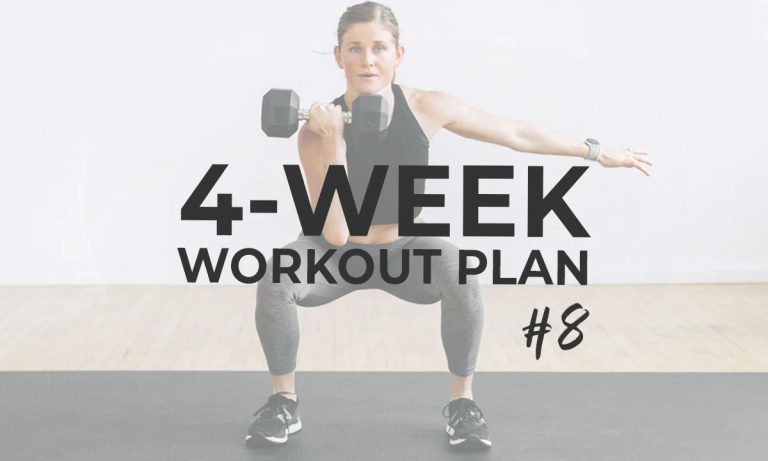Back Strong: A Comprehensive Guide to Building a Powerful and Pain-Free Back

Fitness for the back is crucial for maintaining overall health and preventing injuries. A strong back not only supports the spine and improves posture, but it also helps in performing daily activities with ease. However, many people neglect their back muscles in their fitness routine, leading to pain and discomfort. It is important to incorporate exercises that target the back specifically to build strength and flexibility.
Back Strong: A Comprehensive Guide to Building a Powerful and Pain-Free Back is a valuable resource for anyone looking to improve their back health. This comprehensive guide offers a wide range of exercises and stretches that are designed to strengthen the back muscles and alleviate pain. The book also provides information on proper posture, ergonomics, and lifestyle changes that can help promote a healthy back.
One unique feature of Back Strong is its focus on preventing back pain through a combination of strength training and flexibility exercises. The book emphasizes the importance of building a strong foundation to support the spine and prevent injuries. Additionally, it offers tips on how to properly perform each exercise to avoid strain and maximize results.
In the upcoming chapters of Back Strong, we will delve into specific back exercises that target different muscle groups, as well as stretches to improve flexibility and mobility. We will also explore the importance of proper alignment and posture in maintaining a healthy back. By following the guidance laid out in this comprehensive guide, readers can take proactive steps towards building a powerful and pain-free back.
- Proper form and technique are crucial when performing back exercises to prevent injury and maximize results.
- Incorporating a variety of exercises that target different muscle groups in the back can help ensure overall strength and balance.
- Prioritizing core strength and stability is important for supporting the back and maintaining proper alignment.
- Implementing functional movements, such as deadlifts and rows, can translate to better performance in everyday activities.
- Consistent stretching and mobility work are essential for maintaining flexibility and preventing stiffness in the back.
- It is important to listen to your body and adjust the intensity of your workouts as needed to avoid overexertion.
- Building a strong back not only improves physical performance but can also alleviate chronic pain and improve posture.
What are the benefits of fitness for back?
When it comes to fitness for the back, there are several important terms that you should familiarize yourself with. Core strength refers to the muscles in your abdomen, lower back, and pelvis that work together to support your spine and help with everyday movements. Posture is the position in which you hold your body while standing, sitting, or lying down. Good posture is important for maintaining a strong and healthy back. Flexibility is the ability of your muscles and joints to move through their full range of motion. It’s essential for preventing injuries and maintaining a pain-free back.
Understanding the importance of fitness for the back is crucial for overall health and well-being. A strong and healthy back not only improves your posture and reduces your risk of injury, but it also enhances your overall fitness levels. By incorporating exercises that target the muscles in your back and core, you can improve your strength, flexibility, and endurance. Whether you’re a seasoned athlete or a fitness beginner, prioritizing back fitness can help you reach your health and fitness goals while keeping your back pain-free.
Exercise Options for Building Strength
When it comes to building strength, there are a variety of exercise options available to choose from. Some popular choices include weightlifting, bodyweight exercises, and resistance training. Weightlifting, such as squats, deadlifts, and bench presses, is a great way to build overall strength and muscle mass. Bodyweight exercises, like push-ups, pull-ups, and planks, are great for improving functional strength and core stability. Resistance training, using bands or machines, can target specific muscle groups and help build strength in a more controlled manner.
Dietary Strategies for Optimizing Performance
Optimizing performance through diet is essential for achieving fitness goals. Some popular dietary strategies include calorie counting, macronutrient tracking, and meal planning. Calorie counting involves monitoring the number of calories consumed versus the number burned to maintain or lose weight. Macronutrient tracking involves focusing on protein, carbohydrates, and fats to optimize energy levels and muscle recovery. Meal planning helps ensure proper nutrition for performance, including pre- and post-workout meals to support muscle growth and recovery.
Recovery Techniques for Preventing Injury
Preventing injury through proper recovery techniques is crucial for maintaining a healthy and active lifestyle. Some popular recovery techniques include foam rolling, stretching, and massage therapy. Foam rolling helps reduce muscle soreness and improve flexibility by releasing tension in the muscle fascia. Stretching helps maintain proper joint mobility and prevent muscle imbalances that can lead to injury. Massage therapy can help reduce muscle tension, improve circulation, and promote relaxation for optimal recovery after intense workouts.
1. Is this guide suitable for beginners or only advanced individuals?
This guide is designed for individuals of all fitness levels, including beginners. It contains detailed instructions and progressions that cater to those who may be starting their fitness journey or looking to improve their back strength. The exercises can be modified to suit different abilities, allowing anyone to build a powerful and pain-free back.
2. Can I follow this guide if I have a history of back pain or injuries?
It is recommended to consult with a healthcare professional before starting any new exercise program, especially if you have a history of back pain or injuries. The guide offers a range of back-strengthening exercises that can help alleviate pain and prevent future issues, but it’s important to ensure that these exercises are safe and appropriate for your individual needs.
3. How often should I be performing the exercises in this guide?
Consistency is key when it comes to building a strong and healthy back. It’s recommended to perform the exercises in this guide at least 2-3 times per week to see optimal results. Listen to your body and make adjustments as needed to avoid overexertion or burnout.
4. Are there any equipment requirements for following this guide?
Most of the exercises outlined in this guide can be done with minimal equipment, such as resistance bands or dumbbells. However, some exercises may require access to a gym or specific machines. Modifications can be made to accommodate different equipment availability, so don’t feel discouraged if you don’t have access to certain tools.
5. Will following this guide help improve my posture?
Yes, strengthening your back muscles can have a significant impact on your posture. By engaging and building the muscles that support your spine, you can improve alignment and reduce the likelihood of slouching or hunching. Consistent practice of the exercises in this guide can lead to better posture and overall back health.
6. Can I combine this guide with other forms of exercise or fitness programs?
Absolutely! While this guide focuses specifically on building a strong and pain-free back, it can be incorporated into a broader fitness routine. You can pair these exercises with cardiovascular workouts, strength training for other muscle groups, or flexibility exercises for a well-rounded fitness regimen.
7. How soon can I expect to see results from following this guide?
Results may vary depending on your current fitness level, consistency with the exercises, and adherence to proper form. Some individuals may notice improvements in strength and comfort in their back within a few weeks, while others may take longer to see significant progress. Patience and dedication are key components to achieving lasting results.
8. Are there specific warm-up or cool-down routines recommended in this guide?
While warm-up and cool-down routines are important for any workout regimen, this guide does not provide specific instructions for these components. It is recommended to incorporate a dynamic warm-up to prepare your muscles and joints for exercise, as well as a cooldown to aid in recovery and prevent injury. Listen to your body and adjust your routine as needed.
9. Is it necessary to follow a specific diet or nutrition plan while following this guide?
The focus of this guide is primarily on building a strong and pain-free back through exercise. While a balanced diet and proper nutrition can support your fitness goals, there is no specific diet plan included in this guide. Your dietary choices may influence your overall health and fitness progress, so it’s important to fuel your body with nutritious foods that support your goals.
10. How can I track my progress while following this guide?
There are several ways to track your progress and stay motivated throughout your fitness journey. Keeping a workout journal, taking measurements of your back strength and flexibility, or documenting changes in your posture can all be helpful tools for monitoring your progress. Celebrate small victories along the way and stay committed to your goals to see long-term results.
Final thoughts
In conclusion, Back Strong: A Comprehensive Guide to Building a Powerful and Pain-Free Back provides a wealth of information and practical tips for improving the fitness of your back. By emphasizing proper posture, strengthening core muscles, and incorporating regular stretching and strengthening exercises, individuals can prevent and alleviate back pain while increasing overall strength and flexibility. The importance of maintaining a healthy lifestyle, including staying active, eating a balanced diet, and managing stress, cannot be overstated in supporting back fitness.
Remember, consistency is key when it comes to achieving a strong and pain-free back. Make a commitment to incorporating back-friendly exercises into your daily routine and listen to your body’s signals to avoid overexertion. Consulting with a healthcare provider or fitness professional can also provide personalized guidance and support towards your back fitness goals.
By prioritizing the health and wellness of your back, you can improve your overall quality of life and prevent potential injuries in the future. Take the necessary steps to build a powerful and pain-free back, and reap the numerous benefits that come with prioritizing your back fitness.




